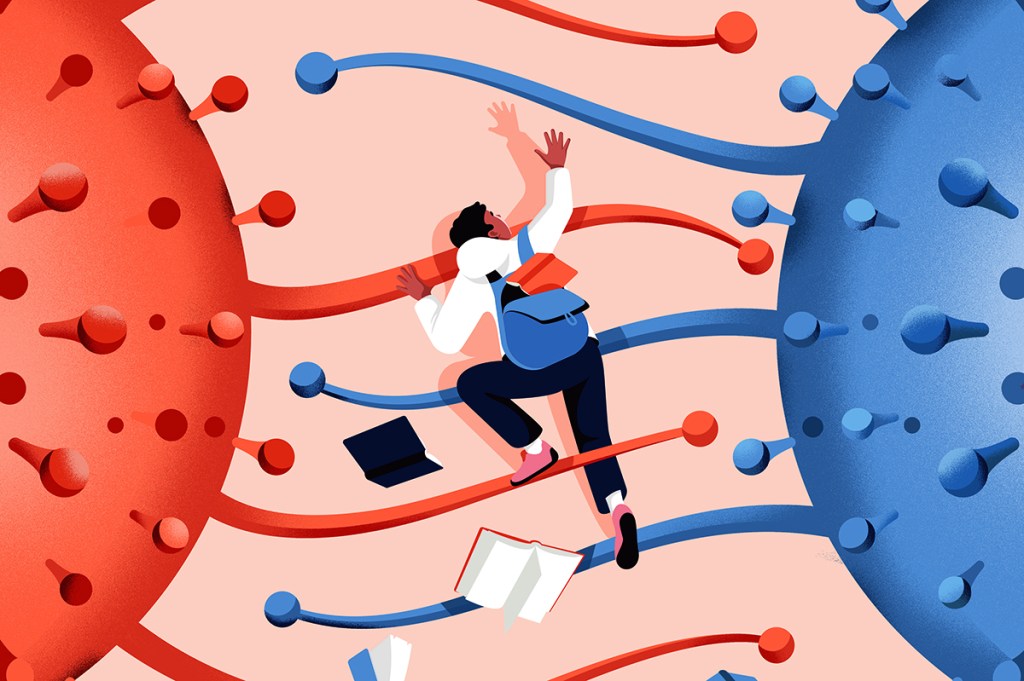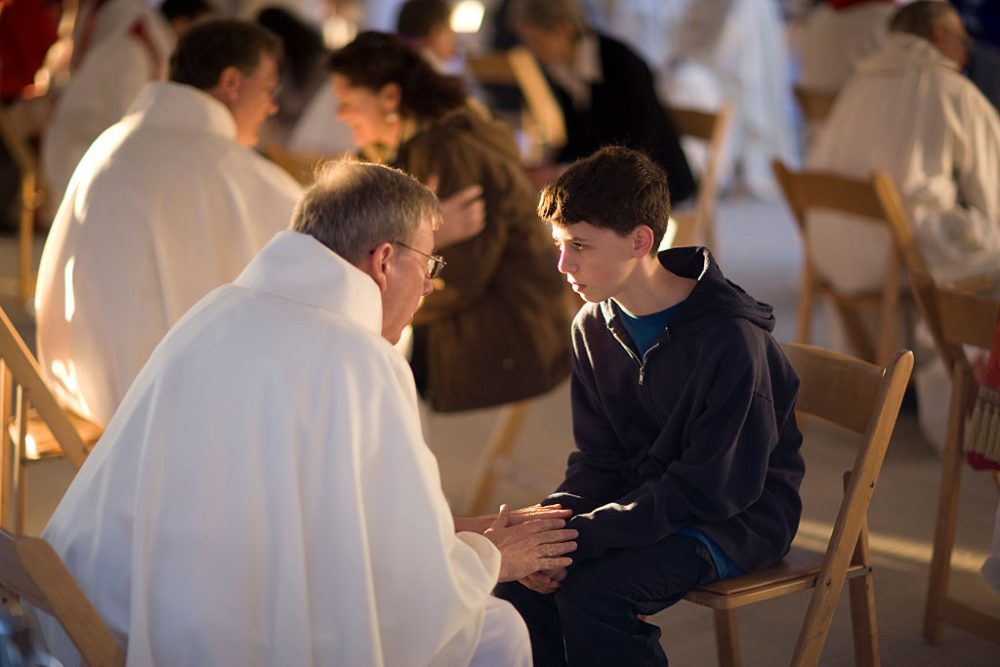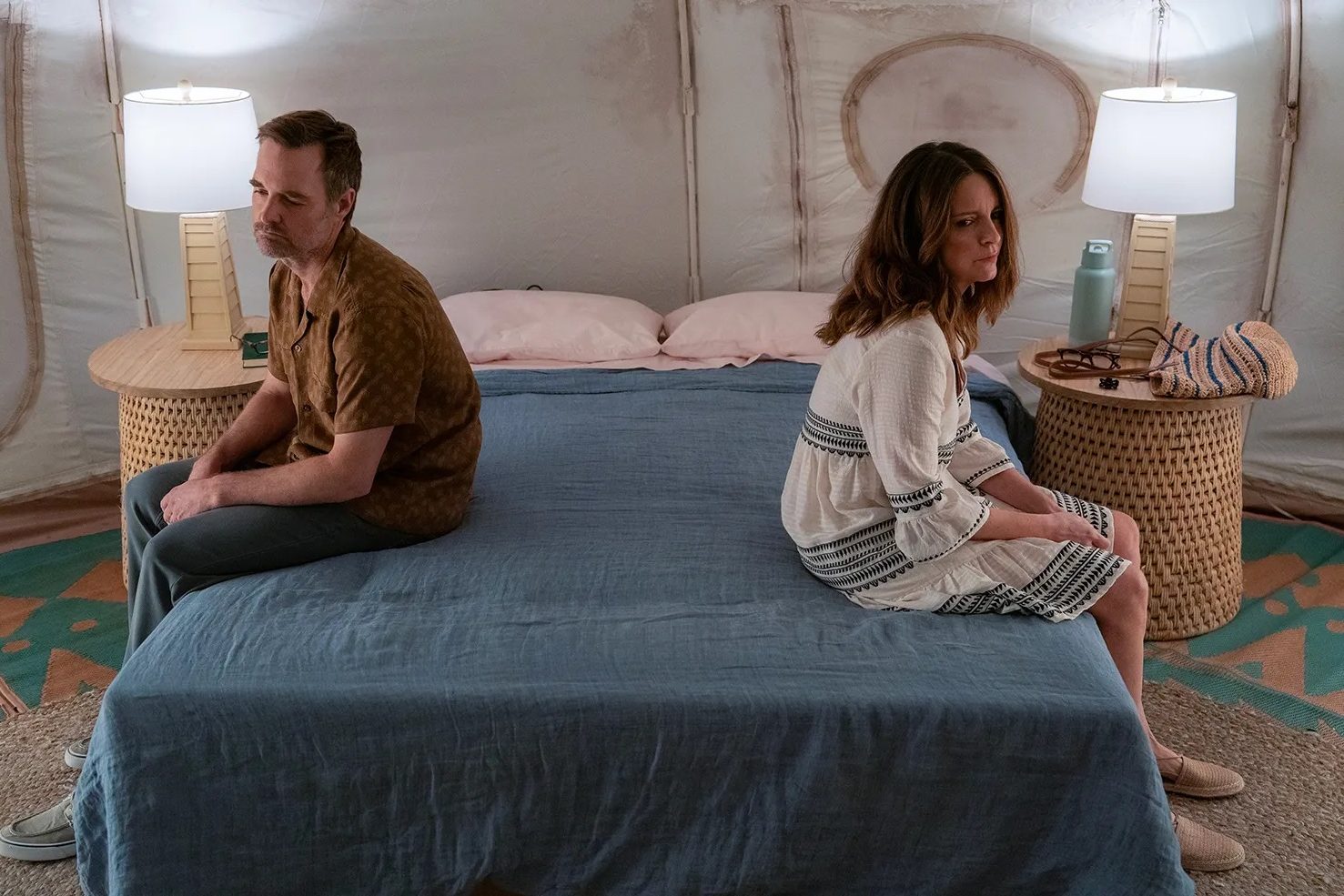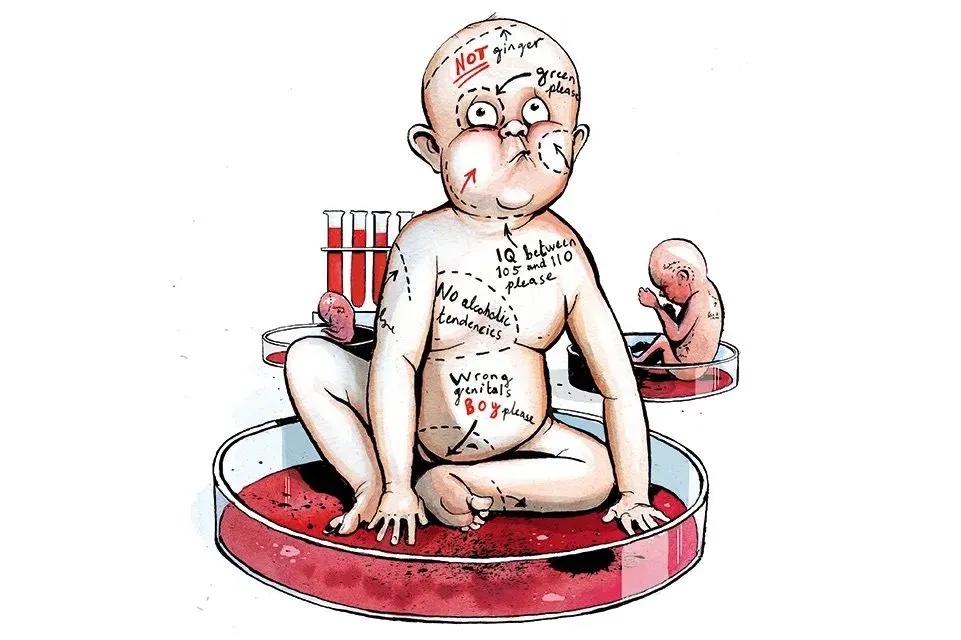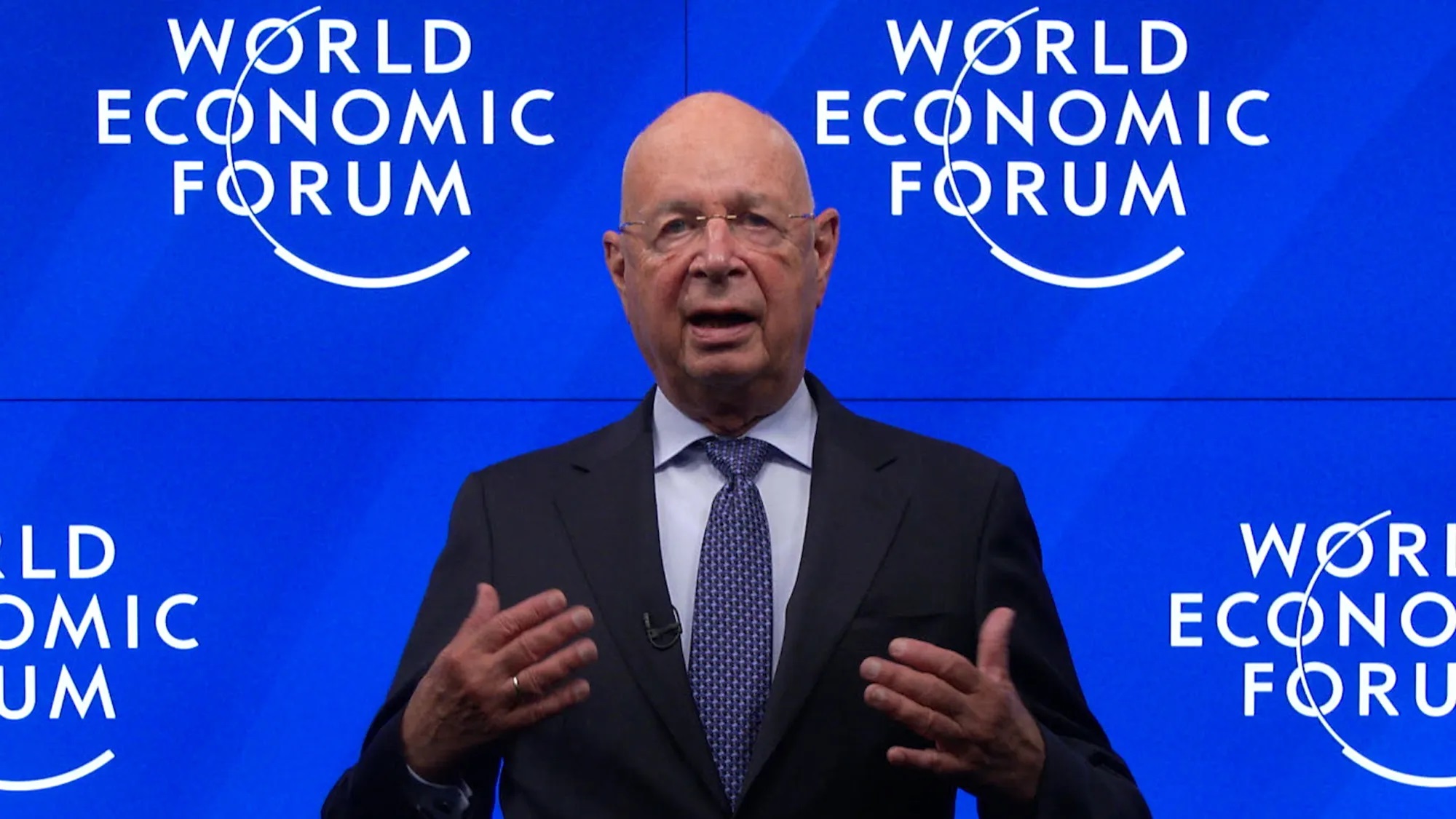Millions of American children are about to enter their fourth year of Covid-impacted schooling. In vast swaths of the United States, a child now entering second grade has never had anything resembling a normal school experience. No child entering kindergarten has a memory of life before the pandemic. A rising junior in high school has never had a normal high school experience.
Over two years into the pandemic, we know that the effects of “long Covid” are basically nonexistent in kids. Following the release of a study published in the Lancet, Alasdair Munro, a pediatric infectious disease specialist in the United Kingdom, tweeted, “A new, large study on long covid in children using Danish registry data has some very reassuring findings.” The authors explained what the real long-term impact of Covid in kids might be: “The Covid-19 pandemic is likely to leave long-lasting marks on a generation of children and young people, mainly from indirect effects, including those of school closures, social isolation and a so-called immunity debt resulting from two years with reduced exposure to common pathogens.”
For an entire generation, this real “long Covid” effect in kids will linger for decades, if not whole lives. Two years of Zoom school, masks and excessive and repeated quarantines, on top of canceled sports and extracurriculars, and extended amounts of time online will have a ripple effect not just for individual children, but for entire communities, and will extend far beyond “just” academics.
It all started with school closures. Writing for an academic journal of bioethics in summer 2022, Shamik Dasgupta argues that school closures were a “moral catastrophe” that progressives were responsible for. “My argument that they were a moral catastrophe is directed at progressives and will draw on progressive principles. This is primarily because I believe those principles are true. But it’s also because extended school closures occurred disproportionately in progressive areas. If we’re to avoid repeating the catastrophe, it is progressives who most need to listen.”
School closures were indeed catastrophic for children, especially those in progressive strongholds like Dasgupta’s home state of California, where families endured some of the most prolonged shutdowns in the country. A new Brookings Institute study offers a comprehensive overview of the effects of the closures on test scores. It’s not pretty. After tracking math and reading test scores for the first two years of the pandemic for more than five million students in third to eighth grade, the authors found that:
Average fall 2021 math test scores in grades 3-8 were 0.20-0.27 standard deviations (SDs) lower relative to same-grade peers in fall 2019, while reading test scores were 0.09-0.18 SDs lower. This is a sizable drop. For context, the math drops are significantly larger than estimated impacts from other large-scale school disruptions, such as after Hurricane Katrina — math scores dropped 0.17 SDs in one year for New Orleans evacuees.
Even more concerning, test-score gaps between students in low-poverty and high-poverty elementary schools grew by approximately 20 percent in math (corresponding to 0.20 SDs) and 15 percent in reading (0.13 SDs), primarily during the 2020-21 school year. Further, achievement tended to drop more between fall 2020 and 2021 than between fall 2019 and 2020 (both overall and differentially by school poverty), indicating that disruptions to learning have continued to negatively impact students well past the initial hits following the spring 2020 school closures.
Kids fell behind and, two years later, they fell further behind. It makes sense. If you never learned how to read in first grade and you’re now in fourth grade, every part of your academic progress is stunted; everyone around you is moving on but you can’t keep up, not just in reading and writing, but in social studies, math and science.
For older children, many of whom were already struggling to keep up prior to the spring of 2020, it’s leading to an epidemic of absenteeism. In San Francisco, the Board of Education released shocking numbers on the heels of the 2021-22 school year. The number of students “chronically absent” (absent more than 10 percent of the school days in a given year) was at 28.4 percent, with under half — 47.2 percent — of exiting eighth-graders deemed “ready for high school.” In a performance analysis document published by the Board of Education, they explain, among “the percentage of students attending 90 percent or less of the instructional days, the rate has doubled (12-14 percent to about 28 percent). About two of three African-American and Pacific-Islander students were chronically absent in 2021-22, while about one of two Latinx students were chronically absent.” As local activist Michelle Tandler said of these shocking numbers: “As a reminder, our elected officials spent most of [the] pandemic debating school names and whether or not to cover a mural while kids sat at home without proper laptops or WiFi.”
What happens when you tell kids for two years that their education is not essential, letting them fall farther and farther behind their peers? What happens when boys, especially, are left to languish unsupervised, without a place to go and without purpose? Keeping kids off the streets has been the objective of every urban youth initiative for decades, because it has always been well understood that keeping kids off the streets means keeping them out of trouble. The chronic absenteeism of an entire generation isn’t just going to damage their lives and futures, but our entire society.
Across the country, youth crime is of increasing concern. Dr. Jessica Hasson, a licensed psychologist in the DC area, is working in a juvenile justice system that has seen a rise in carjackings and assaults, especially with lookalike weapons like BB guns, easily found on Amazon and in Walmart, that bear a striking resemblance to authentic Glock handguns. Dr. Hasson told me that:
It’s not uncommon for a child involved in the juvenile justice system to feel disengaged from school. During the pandemic, I evaluated a number of children who were engaged with school in-person but unable to access virtual services. Some were children who had one-on-one support in school. They were not afforded this with virtual. No one came to their residence to re-explain the assignment, keep them focused, or even offer support. They were on their own. As a result, they had difficulty accessing the curriculum. They became frustrated and disengaged, hence some of the involvement in the juvenile justice systems.
As she explained, “There’s only so much frustration a person can take, especially when the odds are stacked against them.”
And children weren’t just the perpetrators of increased crime, but the victims of it as well. A prosecutor in southeastern Pennsylvania told me that Childline reports, which are reports of suspected child abuse and are generally made by mandated reporters (e.g., teachers, therapists and nurses), were way down in 2020. She explained that “most kids who are abused are abused by family members or individuals close to the family, so we believe the reduction in reports was more a result of kids not being around mandated reporters than an actual reduction in abuse. While we got fewer reports in 2020, we did get some really severe ones due to the abuse being detected only when it became so serious that the child needed to be hospitalized. The number of reports significantly rebounded once kids were back in school.”
Violence against children is a societal threat, not just a tragedy for individual children. The prosecutor explained, “Exposure to violence in the home without interruption is impacting youth crime and will continue to do so for quite some time.” The experiences of this prosecutor chime with nationwide data on child abuse: the number of reports plummeted, with many working in the field fearing for the children without access to mandatory reporters.
On absenteeism, abuse and the many other problems that followed from school closures, the horrifying official numbers don’t even capture the full scale of the problem. Experts estimate that tens of thousands of children are missing from the public school system altogether in each state. There are tens of thousands of families that decided to pull their kids out of the failing system to homeschool them, but, by and large, those parents notified the school district that they were doing so. There are tens of thousands more (again, per state) who didn’t notify anyone, and whose children just vanished. As an ABC News story explained in March 2021, “Given the chaos caused by the pandemic, and the lack of data, it is difficult to truly determine the exact magnitude of the problem, which seems to be disproportionately affecting already vulnerable student populations — among them homeless students, children with disabilities, children of immigrants, children in foster care and children of color.”
Discussing the issue, the National Educators Association, one of the nation’s largest teachers’ unions, opined on the “solution” the Robla School District in Sacramento came to: “Robla worked with a local nonprofit, the Roberts Family Development Center, to open a learning hub where students could go four days a week for supervised online learning in a safe environment, with health protocols in place. The program provided transportation, breakfast, lunch, and an afternoon snack.”
One social worker calls the hub “a life-saver” for her students. What else might this place where children could go and learn and get three meals in a day be called? One term might be “a school.”
Instead of engaged teachers making eye contact with kids, for over a year and a half in urban areas across America (not just Sacramento) some of the country’s most vulnerable kids were put in “learning hubs” with minimum-wage workers acting as Zoom butlers, helping students log on and do their work remotely. Is it any wonder already at-risk children disengaged even more, often disappearing entirely? If it was safe for these minimum-wage employees and students to show up at these “hubs,” why couldn’t teachers?
Even in the fall of 2022, the war on American school children in urban areas isn’t over. In Washington, DC, a new vaccine mandate is set to take effect for students twelve and over; if enforced, it could lock 40 percent of the city’s black students out of classrooms and back onto Zoom (if they even log on, which, if experience is any indicator, the majority would not).
The mandate in the nation’s capital is yet another reminder that all our pandemic policies have put children’s health and wellbeing at the absolute bottom of our list of priorities.
Lawmakers in Washington are determined to keep ignoring the catastrophic learning loss created by our nation’s response to the pandemic. On July 27, 216 House Democrats voted against Republicans’ motion to recommit HR-3771, offered by Iowa representative Mariannette Miller-Meeks. This motion would have required the secretary of Health and Human Services to report on the impacts of school closures and lack of in-person instruction — specifically how such closures have affected the academic achievement, mental health and social development of children, especially children in low-income, disadvantaged or vulnerable communities.
There is no urgency even to measure how far behind children have fallen, let alone fix it. In a recent column for the Washington Post, Alyssa Rosenberg hypothesized about possible solutions, “The policy solutions aren’t simple — even if we leave out expensive, politically contentious ideas such as huge investments in hiring and training teachers and grief counselors; subsidized childcare; extra years of primary school; or universal basic incomes to prevent families from being plunged into poverty.” Notably, Rosenberg explained, “When we spoke in June, Ashish K. Jha, the White House’s Covid-19 response coordinator, said a critical aspect of any response to children’s learning loss and other sacrifices would be a long-term commitment rather than a short-term infusion of cash.” And yet Jha has not proposed any long- or short-term programs, nor has the Biden White House. American parents know that Democrats’ cozy relationship with teachers’ unions kept their kids’ schools closed. Now they also see the total lack of urgency on the part of Democrats to fix the damage they’ve caused.
After locking kids inside and on screens for two years, we’ve seen significant jumps in obesity and rates of mental illness like anxiety and depression. In early January 2021, the situation for Las Vegas teens became so dire, many teachers and administrators in the school district admitted that the surge of teen suicides they were seeing was linked to the school closures. The New York Times reported, “Since schools shut their doors in March, an early-warning system that monitors students’ mental health episodes has sent more than 3,100 alerts to district officials, raising alarms about suicidal thoughts, possible self-harm or cries for care. By December, eighteen students had taken their own lives. The spate of student suicides in and around Las Vegas has pushed the Clark County district, the nation’s fifth largest, toward bringing students back as quickly as possible.”
Around the world, we’ve seen rates of food insecurity, poverty and even starvation rise to catastrophic levels. A new United Nations report estimated that 228,000 children died in South Asia alone; not because of Covid, but due to the region’s severe lockdowns affecting nutrition programs and immunization drives.
The effects on children’s health have sometimes been surprising. With children cloistered away from normal childhood illnesses; their immunity suffered. Spikes of traditionally “winter” viruses like the flu and the respiratory virus RSV have been seen in hospitals during off-peak months, filling beds and taxing healthcare resources. Recently it was discovered that a severe form of hepatitis affecting kids worldwide was likely caused by our lockdown policies as well. CNBC reported in late July 2022 that “new research suggests that a lack of exposure to two common viruses during the Covid-19 pandemic may have increased the chances of children becoming severely ill with acute hepatitis.”
It will take a lifetime to learn the full scope of the effects of our Covid policies on the world’s youth. We will see the impact in a myriad of devastating statistics: a rise in crime, violence, physical and mental illness, illiteracy and starvation. There will be surprises, unexpected ways that our lockdown and school closure policies had a domino effect, like that of the severe pediatric hepatitis outbreak over a year after the worst of the world’s lockdowns were over. But one thing is for sure: we will be paying the price for what we’ve done to an entire generation for the rest of our lives, not to mention theirs.
This article was originally published in The Spectator’s September 2022 World edition.



